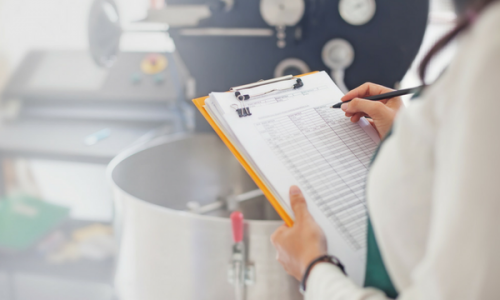Five surprising problems that can cause temperature monitoring fails all listed in this blog post. How many of these problems is your business facing with? Read more.
1: Pencil whipping and inaccurate temperature logging.
Pencil whipping means creating false records. The underlying problem here isn’t falsifying checklists or logs per se; it’s relying on an old-school, manual, labor-intensive, and time-consuming process that’s easily prone to abuse and mistakes. The solution can be summed up in one word: digitize. As FastCasual.com writes, “Automating your HACCP temperature recording process with a system of remote monitors maintains tracking of your food and storage temperatures 100 percent of the time.”
2: Faulty or malfunctioning sensors.
To maintain proper temperatures, you must be able to trust the equipment to relay temps accurately, all the time. Unfortunately, the thermostat piece of cold-holding units is often very fragile, and one of the most common issues afflicting commercial walk-in refrigerators and freezers is the thermostat failing before the equipment itself does. Put simply, you cannot rely solely on the built-in thermostat alone.
3: No temperature monitoring alerts.
One of the biggest risks in food safety: you don’t know what you don’t know. You may not be aware those sensors are faulty, as mentioned above; but even if they work perfectly, you might still be unaware if temps have gone out of spec unless someone checks. You might not know if a checklist was completed an hour late. You might not know what, if any, corrective actions were taken in response to issues. Automated anomaly reports, reminders, and real-time corrective actions can close this huge safety gap.
4: Temperature sensors aren’t right for your needs.
Some sensors are unable to transmit through the thick walls of the cold-holding unit, especially cheap sensors. If critical food safety equipment cannot work properly in the environment in which they’re needed, or if they require modifications like drilling through the cold-holding unit and consequently voiding the warranty, they will cause problems. Always ask about frequency and transmit power to understand if the sensor can communicate adequately, or if you’ll face reception problems.
5: Probes aren’t sufficiently sensitive.
The FDA requires that a probe inside a restaurant to be accurate to +/- 2¡ F. However, some probes and sensors will only meet that requirement within a very narrow operating range, like 68¡ to 86¡ F. Consequently, once you place it in a cold-holding unit, the accuracy may well exceed the +/- 2¡ F error margin requirement. For a closer examination of this issue, read our article, “Are your Bluetooth temperature probes actually as accurate as you need them to be?“
Would you like more information? Contact ComplianceMate with questions.



